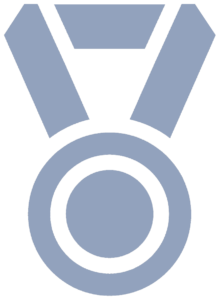2021 Virtual Undergraduate Research Symposium
2021 Virtual Undergraduate Research Symposium
Additive Manufacturing of High-Pressure Components for Nuclear Power Plants
Additive Manufacturing of High-Pressure Components for Nuclear Power Plants
 3RD PLACE ORAL TALK
3RD PLACE ORAL TALK
PROJECT NUMBER: 71 | AUTHOR: Joe Morton, Mechanical Engineering
MENTOR: Jonah Klemm-Toole, Metallurgical and Materials Engineering
ABSTRACT
The project involves investigating the structural and thermal characteristics of additively manufactured (AM) high pressure components like pipes and valves used in nuclear power plants. Currently, when there is an unexpected component failure, the plant is shut down for days or weeks as the replacement part will likely be made to order and not be “in stock”. This loss in power generation time represents millions of dollars in lost revenue and fines. If high pressure components can be additively manufactured on-site in a much shorter amount of time, the cost benefits and increased reliability would be immense. This concept can be extended more broadly to all thermal power generation technologies including nuclear powered Naval Carriers.
PRESENTATION
AUTHOR BIOGRAPHY
Joe Morton is a junior in the mechanical engineering department and originally from San Francisco Bay, California. He is finishing up his bachelor’s degree in mechanical engineering going into his senior year as he plans to start in the 4+1 master’s program to get his master’s degree in mechanical engineering at Mines as well. He is currently working for the metallurgical and materials engineering department in the welding center doing research on thermal and mechanical properties of direct energy deposition additive manufacturing, but also TAs for the MEGN200 programming and hardware interface class, and is currently the Vice President of ASME. He hopes to start research next year with the XSTRM lab in the mechanical engineering department. Outside of school Joe builds and races road-race endurance touring cars in a series called Lucky Dog Racing in 7-24 hour long races, and when he isn’t racing or working on the car he loves hiking, climbing, snowboarding, and doing adventure and street photography.
Great job Joe!
Thank you for all the help and mentorship Jonah!
I did research on simulating AM, so it was interesting to hear about the physical AM research being done on campus. Also, what software did you end up using for the Arcmate, you just listed it was difficult to get started?
Hi Beau,
When we were trying to get it started I was simply writing the program on the controller, and that’s why it was somewhat difficult to get it started. At the time I was trying to find a port so I could feed the machine a program written with outside software, but from visual inspection and reading through the manual there wasn’t a way to feed an externally written program. Rather than trying to do this via serial communication or some modification to the unit, it was pretty clear that the best option for my research was to simply use a gantry. I hope that answers your question.
Why do you think changing the shielding gas would lead to better resolution and mechanical properties of parts?
Currently the 95% argon and 5% CO2 shielding gas is only what is coming out of the welding nozzle. If a bath of either the same gas or possibly 100% argon was used, we may have better control over temperature and surface oxidation. By lowering the surface oxidation and providing better temp control layer adhesion would be better, thus resulting in higher strength.